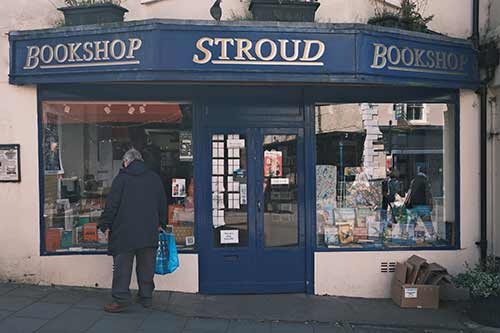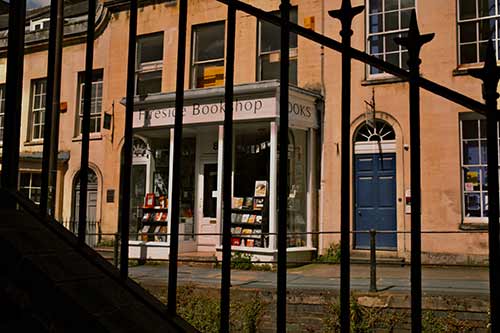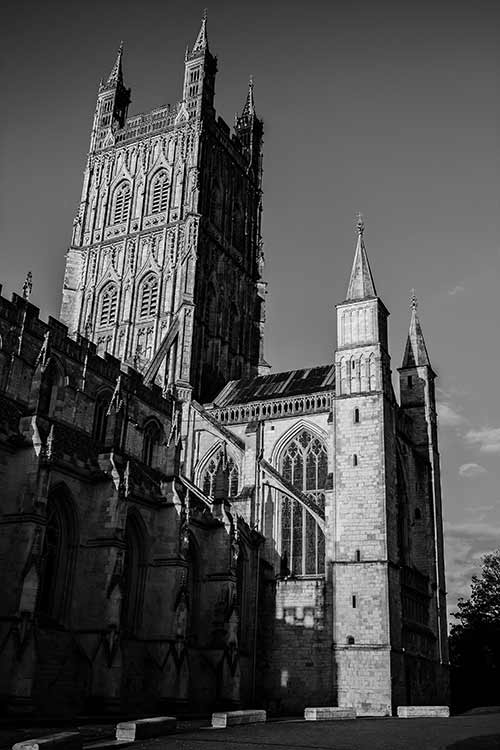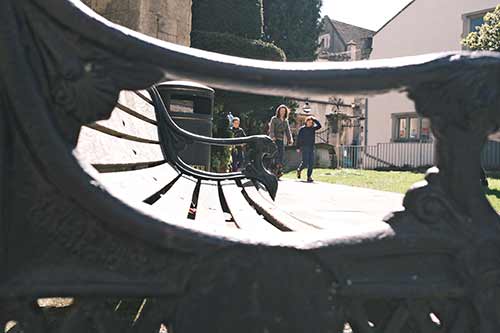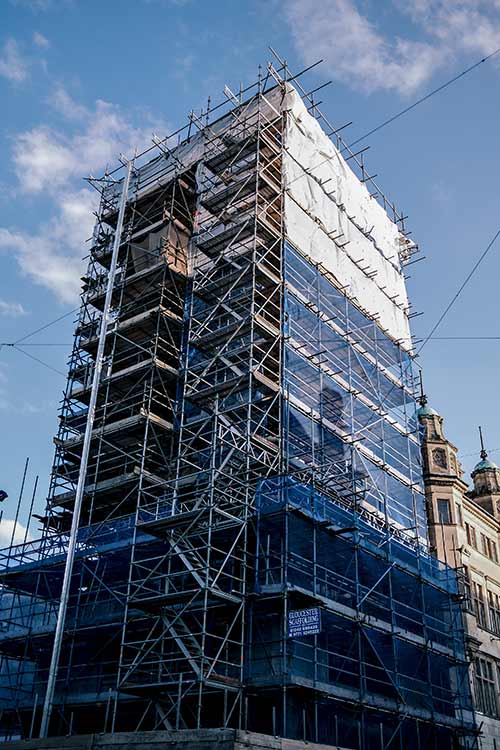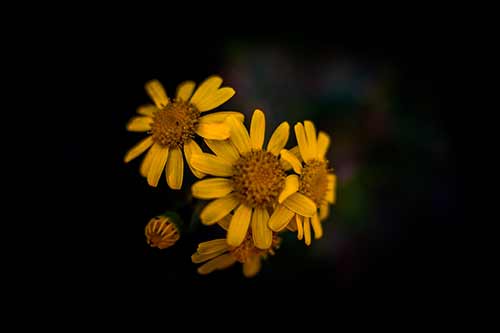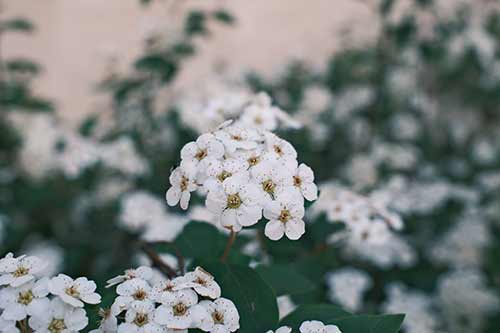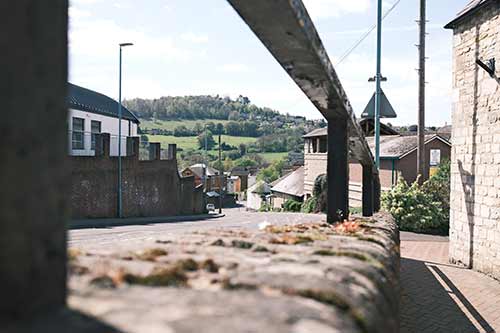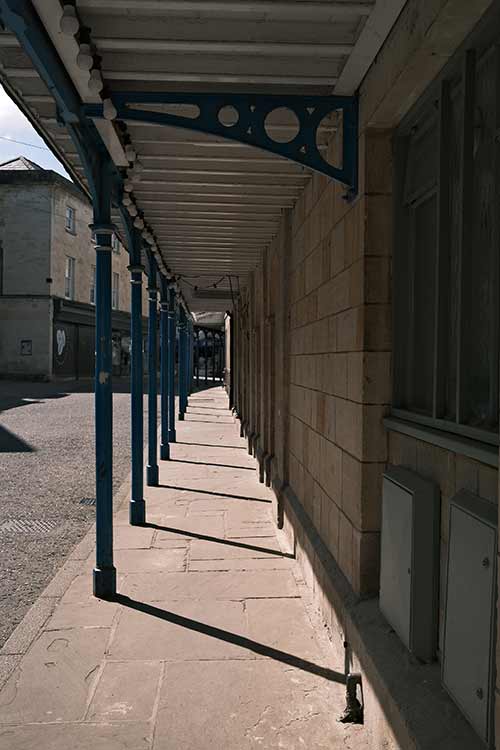Is the Fujifilm X100VI Street Smart?
When it comes to street photography, there are a few points I like to keep in mind when choosing my gear:
- Is the look suitable and discreet enough?
- What size sensor do I need?
- What’s the best lens for wide-angle street photography?
- How easy is on-the-go file transfer?
On the surface it looks like the Fujifilm X100VI is made for street photography; it’s compact with a stylish classic design; it has a hugely powerful 40 megapixel CMOS sensor; it has a fixed wide-angle 23mm lens; and it syncs up easily to the XApp for transferring images straight from camera to phone.
But just how street-smart is it in practice? That’s what I intend to find out on the streets of Gloucester and Stroud.
Classic Design
As I mentioned, the first thing to keep in mind is the look. With the Fuji X100VI in hand, I didn’t have to worry about drawing attention to myself due to its compact and classic design. The aesthetic is very familiar to those used to film cameras. The exposure and shutter dials will appeal to those photographers who value manual adjustments over settings in a menu.
The key thing with having this camera as your travel buddy is that it blends in on the streets, and gives the photographer a feel for an analogue camera but inside it’s packed with all the modern features of a mirrorless. It also makes the camera less intimidating to the subjects on the streets, such as people on walks, in coffee shops or reading a book in the park etc.
Large 40MP Sensor
The second key point of utmost value to me is the sensor. The X100VI has a 40MP cropped APS-C sensor which is hugely beneficial while capturing street shots. In essence, you could say the larger the sensor, the better the image (or at least the better chance of a good image).
A large sensor contributes to impressive dynamic range, low-light performance and the flexibility to comfortably crop without losing too much file size in post. It all boils down to capturing the maximum detail to help convey your perspective to an onlooker.
Fixed 23mm Lens
Another aspect, that appeals to many photographers, is the fixed lens on the X100VI. The fixed 23mm (35mm equivalent) is a favourite amongst street photographers because it is wide enough to capture a good field of view for street and architecture, while not being so extreme that you can’t use it for portraits.
The fixed lens is small on the front of the camera and will allow photographers to blend into their surroundings for discreet capture. One of the joys and challenges that many street photographers enjoy is a fixed lens; it simplifies the shooting experience and allows the photographer to really get to know their camera and how it will react to certain situations.
Design and Dials
The X100VI comes with physical dials and controls, which is what I enjoyed most when I had this camera. Whilst on the location it was so smooth for me to toggle between the shutter speed and ISO. The physical dial on the camera is simple, straightforward, and minimalistic, all you must do is rotate it clockwise and anticlockwise to adjust the shutter speed and pop up the same dial to choose ISO between your images.
Another thing I liked on the camera was its explicit hybrid viewfinder that allowed me to experience both the traditional shooting experience though the optical viewfinder as well as more accurate and precise framing through the EVF. If I am honest, I used the EVF more than the OVF as I found it much easier to use while on the go, but it was still nice to have the option of going full rangefinder-mode as well.
f5 - 1/250 - ISO 200
Fujifilm X App
As I was going from street to street, corner to corner and alley to alley, I was able to transfer images from the camera to my smartphone through the Fujifilm X App. I found it very easy to use and the images were on my phone with a click of a button before I even reached my next location.
IBIS
The X100VI offers an insane amount of stabilisation with the IBIS (In Body Image Stabilisation). The IBIS in the camera is very crucial for street photography as you are reliant on the light source, and when you need to react quickly to situations you might not have time to adjust the shutter speed and so you need to have good IBIS to reduce any potential shake.
The improved IBIS in the X100VI helps to accommodate for camera shake, allowing photographers to use a slower shutter speed in low light conditions to avoid any blurry images, this plays a crucial role in street photography where capturing scenes in dimly lit environments is quite normal.
While IBIS is key, using lens adapters with the X100VI allows photographers to familiarise themselves to different adapters for specific street photography while enjoying the stabilisation that the camera has to offer through the IBIS. IBIS also reduces dependency on higher ISO where you are prone to get an over-exposed image which will ruin your whole experience, with the IBIS in place, the X100VI results in a cleaner image quality with less noise, preserving details and enhancing the overall image.
Image quality and feel
While capturing street and using the camera, I realised the candidacy that the camera has to offer. Looking back at all the images, they all speak to me, and it only enhances my knowledge of studying an image.
The X100VI operates with a quiet shutter mechanism which helped me blend into the surroundings and take that shot without being too noticeable or disturbing the scene. The quieter mechanism results in a more authentic final image. The fast autofocus on the camera helped me in instances where I faced camera shakes. The X100VI also benefits from a tilting touch screen which allowed me to shoot from various angles, including low and high angles, without any issues.
Film Sims
Fujifilm has incorporated its film simulation modes which are inspired by their film stocks into their digital cameras including the X100VI. The Fujifilm X100VI comes with REALA ACE, which is a colour-negative film produced by Fujifilm, known for its minimal grain structure, natural colour production and wide dynamic range.
 f2 - 1/500 - ISO 500
f2 - 1/500 - ISO 500
REALA ACE gives street photographers the edge. When it comes to street photography, one must keep in mind that the colours and light in an image are key, in order to capture a more vivid and dynamic scene. The benefit of using the REALA ACE in street photography is the low contrast look, it helped me preserve the highlights and shadows in my image primarily due to the lighting conditions which can vary from time to time, i.e. sunlight, grey and damp sky.
REALA ACE is crucial when it comes to street photography as it minimises grain and offers a wider dynamic range, this allowed me to produce images with crystal clarity and capture a broad range of tonal values from highlights to shadows. This helped me preserve the details in both colour and black and white images, all of which are ideal because of the intricate details to my images.
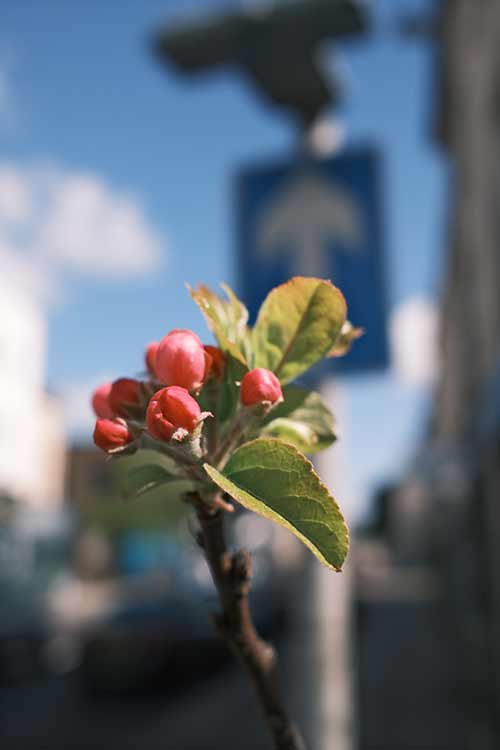 f5 - 1/1000 - ISO 200
f5 - 1/1000 - ISO 200
The availability of REALA ACE on the X100VI allowed me to evoke a nostalgic feel in the images by adding a unique and authentic charm to my photos. It will allow the photographer to bring forth their creative side to express their vision through a unique medium. Using REALA ACE in the X100VI I was able to capture the different moods and atmospheres. Hence, it allows me to enhance my storytelling vision through street photography.
Is the X100VI good for Macro?
Whilst I was using the Fujifilm X100VI, I also tested to see if it was able to capture macro shots while remaining true to its form factor. When it comes to macro photography, the first thing that comes to mind is detail, and what else is best to capture details in than flowers.
The intricate details that I was able to capture using the Fujifilm X100V I were out of this world, as you can see in the examples below, macro photographers can achieve great things with this camera. The colours that were output through REALA ACE, the fixed lens, the wide dynamic range and a great focal length were all key aspects that allowed me to capture such detailed images with ease.
f2 - 1/125 - ISO 400
Photographers who are keen on macro photography are going to enjoy using the X100VI primarily because of the advanced features it has to offer. While using the X100VI, a few points that I kept in mind were:
- The close focusing distance on the camera which is about 10cm (4 inches) is quite useful for me to get as close as possible to my subject but not too close to lose out on the fine details.
- I tend to shoot in Manual focus as I like to have control over what my camera gear can do and how to point it in the right direction at the right time. The option to use focus peaking or magnification to ensure sharp focus worked in my favour as I was able to clearly see what my camera was seeing, and I knew when to lock focus and take the shot.
- The aperture control on the X100VI is smooth as all I had to do was rotate the aperture ring and I was on f2.8 to f16 in the blink of an eye, the aperture ring on the X100VI allowed me to experiment with different angles and different shots to enhance my knowledge in framing and composition.
- Natural and External Lighting is key when it comes to macro photography, you must utilise natural light to ensure you do justice to the colours in the image, all whilst avoiding any shadows or highlights because it can make your image under or overexposed. When it comes to using external or artificial lighting I recommend using LED lights or macro ring flash as these will allow you to illuminate your subjects evenly.
Final thoughts
It all comes down to one question, is the Fujifilm X100VI for you? As a first-time user for me I would say yes, it is. But will it appeal to a wide range of photographers? Below is a breakdown of where the X100VI is ideal:
Documentary Photographers: For documentary photographers, the X100VI is a very reliable and portable camera for capturing real-life events and stories and it offers advanced features, intuitive controls and exceptional image quality. The discrete design of the camera also allows them to work in sensitive and intimate situations.
Travel Photographers: The compact size and wider dynamic range of the X100VI make it an excellent travel buddy for many users who want to document their adventures, eccentricities and intimate moments. Its advance in body image stabilisation and wireless connectivity will act as an advantage to those who travel in big groups and would like their images on social media as soon as possible.
Photojournalists: The fast autofocus system on the X100VI, high-resolution CMOS 5 HR Sensor and advanced features make it well suited for photojournalism, its discreet design allows photographers to work unobtrusively in a wide range of environments.
Enthusiast Photographers: Photographers who appreciate and thrive on the aesthetics of their image will appreciate what the X100VI has to offer them. With REALA ACE, they will be able to express their vision and bring forth their true creative side. With the customisable options on the X100VI, photographers are going enjoy the camera gear that offers them flexibility on the go.
Documentary Filmmakers: With its 4K Capability, documentary filmmakers are going to enjoy the compact and portable camera allowing them to capture high-quality video footage using different film simulation modes. The X100VI with its compact design and colour negative compatibility, will ensure documentary filmmakers to capture fine detail with ease.
And of course, Street photographers.
Dive deeper into the Fujifilm X100VI
Take a closer look at Fujifilm X100VI here >
Read next
- Safari Photography - A First Look into the Fujifilm X-T50
- Is the Fujifilm X100VI good for Travel Photography?
- Fujifilm X100VI | The One and Only
Thank you!
Thanks for taking the time to read our blog, we really do hope they help you out and answer some of your questions. If you still have some unanswered, then please feel free to get in touch with our team of experts.
We have a LiveChat option on our website and we can, of course, be contacted via our email, we're also on the end of the phone too! Read more on how to contact us here >
Want to write for us?
If you've got experience with producing content on photo, video and/or optics products or techniques then we would love to hear from you. Contact our blog editor, Bea, with a sample of your work at bea@cliftoncameras.co.uk.
- By Kushaan Sharma
- 19 Jul 2024






















































